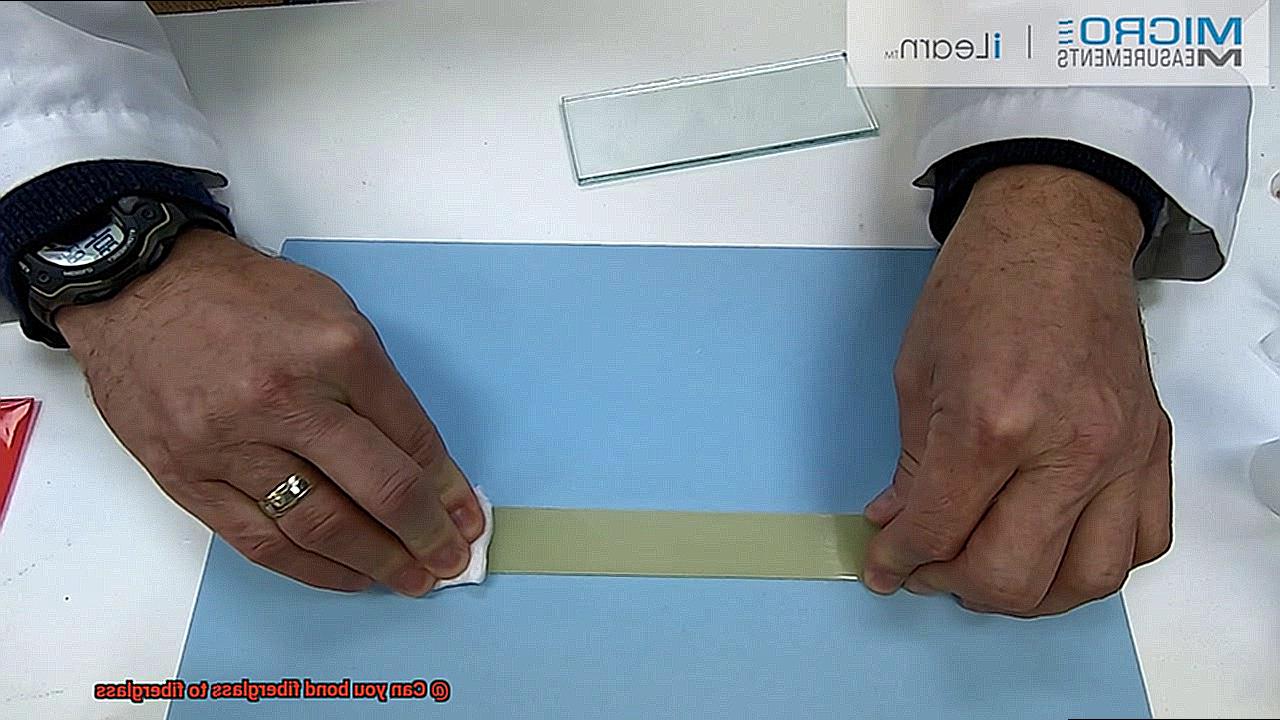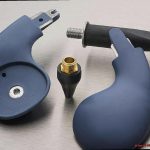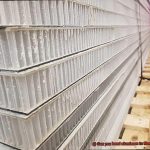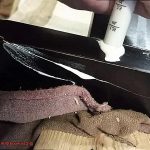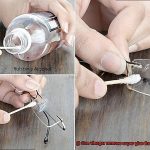When it comes to strength, durability, and resistance to corrosion, fiberglass is a material that stands out. Whether you’re a DIY enthusiast or tackling a repair job, you may find yourself wondering if it’s possible to bond fiberglass to fiberglass.
Well, the good news is that it absolutely is. In this blog post, we’ll take a deep dive into the world of bonding fiberglass to fiberglass. We’ll explore the techniques, tools, and challenges involved in creating a strong and lasting connection between two fiberglass surfaces.
Bonding fiberglass to fiberglass allows you to join multiple pieces together seamlessly or repair damaged sections with ease. However, achieving success in this endeavor requires attention to detail and adherence to best practices.
Techniques and Tips:
Contents
Before diving into the bonding process, there are some crucial steps for surface preparation. Start by giving your fiberglass a thorough cleaning, ensuring all dirt, grease, and adhesive residue are removed. To enhance the bond’s strength, roughen the surfaces using sandpaper or a wire brush. This creates a slightly porous surface for the adhesive to grip onto.
Next up is selecting an appropriate adhesive or resin tailored specifically for bonding fiberglass. Epoxy adhesives and polyester resins are commonly used in such applications due to their excellent bonding properties and resistance against water, temperature fluctuations, and chemicals.
To avoid potential bond failure, make sure you apply the adhesive correctly. Apply a thin and even layer on both surfaces while aiming for complete coverage. Remember that excess adhesive can weaken the bond or create unsightly bulges.
Challenges:
Bonding fiberglass to fiberglass does come with its fair share of challenges. The most notable one is achieving precise alignment and clamping—especially when working on curved or uneven surfaces. Adjustable clamps, heavy objects, or temporary supporting structures can be your best friends in these situations.
It’s worth noting that fiberglass surfaces lack texture, making it more challenging for adhesives to bond. Roughening the surface is key to improving adhesion, but be careful not to damage the fiberglass in the process.
Additionally, proper curing time is crucial for the adhesive to reach its optimal strength. Make sure to follow the manufacturer’s instructions regarding curing times and conditions such as temperature and humidity. This will help you avoid premature bond failure.
What is Fiberglass?
In an ever-evolving world where strength, durability, and versatility are paramount, one material stands out above the rest – fiberglass. Comprised of delicate glass fibers intricately woven together with resilient resin, this composite material has taken industries like construction, automotive, aerospace, and marine by storm.
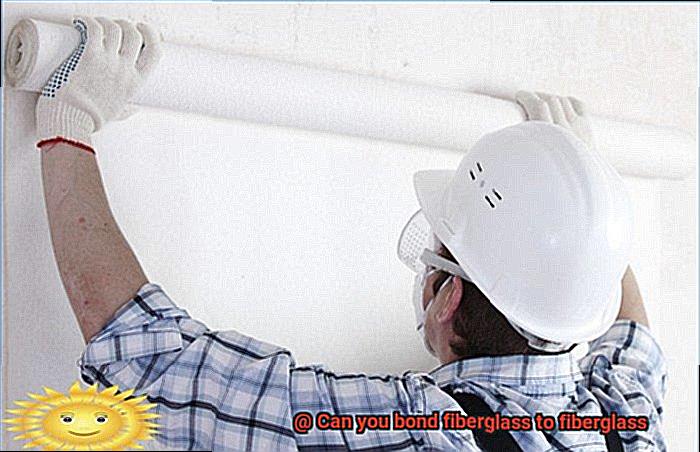
Prepare to dive deep into the captivating world of fiberglass as we explore its unique characteristics, diverse applications, and expert tips for bonding fiberglass to fiberglass.
The Strength of a Feather:
When it comes to raw power combined with feather-light weight, fiberglass reigns supreme. This remarkable material boasts an exceptional strength-to-weight ratio, defying expectations by effortlessly withstanding immense pulling forces without breaking or deforming.
Aircraft components and lightweight vehicle parts owe their structural integrity to the mighty yet lightweight nature of fiberglass.
Built to Endure:
In a world plagued by corrosion, chemicals, and scorching heat, fiberglass rises above the rest as an unrivaled champion. Unlike metals susceptible to rust or corrosion when exposed to moisture or certain chemicals, fiberglass remains impervious to these elements.
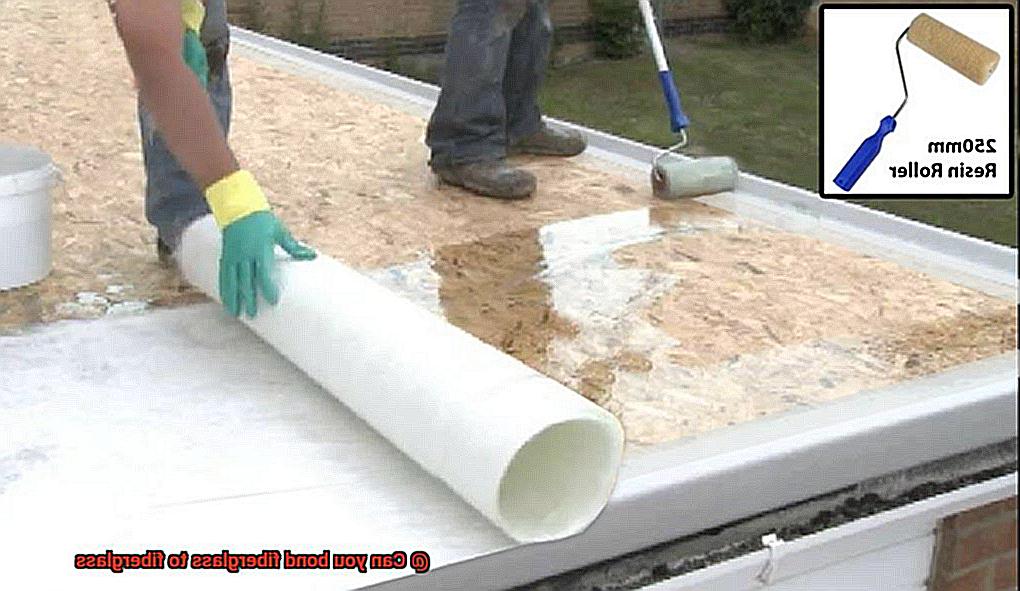
Furthermore, its unparalleled heat resistance makes it a trusted choice for environments that demand unwavering performance in high-temperature conditions.
An Insulating Marvel:
Beyond its physical properties lies yet another invaluable attribute – fiberglass is a non-conductive material. Its electrical insulating capabilities make it indispensable in industries where safety and optimal performance rely on impeccable insulation.
Electrical and electronic sectors find solace in the secure embrace of fiberglass as they rely on its ability to shield against hazardous electrical currents.
Molding Possibilities Beyond Imagination:
The allure of fiberglass extends far beyond its remarkable strength and insulation qualities. With unparalleled flexibility when it comes to molding and shaping, fiberglass offers infinite possibilities. Through techniques such as hand lay-up, spray-up, or compression molding, this extraordinary material effortlessly takes on complex shapes.
From the manufacturing of boat hulls and automotive parts to the creation of breathtaking sculptures and architectural masterpieces, fiberglass transcends boundaries.
Bonding Fiberglass to Fiberglass:
To harness the full potential of fiberglass, proper surface preparation is crucial when bonding fiberglass to fiberglass. Surfaces must undergo meticulous cleaning, ensuring they are dry and free from any contaminants. Gently roughening the surfaces with sandpaper or a sanding block enhances adhesion, guaranteeing a strong bond.
The choice of adhesive cannot be underestimated – epoxy adhesives boast unrivaled strength and durability, while polyester resin presents a cost-effective alternative. For smaller repairs or projects requiring quick bonding solutions, cyanoacrylate adhesives, known as super glue, provide a reliable option.
Preparing the Surfaces for Bonding
If you’re looking to create a bond that withstands the test of time, you’ve come to the right place. In this comprehensive guide, we’ll take you through the essential steps to prepare your surfaces for bonding, ensuring a secure hold that won’t let you down. So, grab your safety goggles and let’s dive in.
Step 1: Cleanliness is Crucial
Before diving into the bonding process, it’s vital to clean both surfaces thoroughly. Dust, dirt, and contaminants can sabotage your efforts and result in a weak bond. Grab a mild detergent or solvent, roll up your sleeves, and give those surfaces a good scrub. Rinse them with water and ensure they are completely dry before proceeding.
Step 2: Smooth Sailing with Sanding
To enhance adhesion, grab some fine-grit sandpaper and gently sand the surfaces you’re bonding. This creates a rough texture that gives the adhesive something to grip onto. Remember, gentle circular motions are key here – we don’t want to damage the delicate fiberglass.
Step 3: Trim Loose Fibers
Inspect your fiberglass surfaces for any loose or frayed fibers that could compromise the bond. Using a sharp utility knife or scissors, carefully remove these offenders and ensure a smooth surface for bonding.
Step 4: De-wax for Success
If your fiberglass has been coated with wax or gel coat, it’s essential to remove it before bonding. Wax acts as a barrier and prevents proper adhesion. Employ a specialized wax remover designed for fiberglass surfaces and follow the instructions meticulously.
Step 5: Etching for Extra Grip (Optional)

For an even stronger bond, consider etching the fiberglass surfaces. This process creates micro-roughness, allowing the adhesive to mechanically interlock with the surface. Options include acid-based etching solutions or mechanical abrasion. Remember to prioritize safety and adhere to manufacturer recommendations.
Step 6: Test, Test, Test.
Before committing to a full bond, it’s wise to perform a test bond on a small area. Apply a small amount of adhesive and follow the curing instructions provided by the manufacturer. Once cured, evaluate the strength and quality of the bond. This step ensures that the adhesive is compatible with your specific fiberglass materials.
Choosing an Adhesive
Today, we embark on a journey through the realm of fiberglass bonding, unraveling the secrets of selecting the ideal adhesive for this specific application. If you seek a bond between fiberglass surfaces that rivals the strength of a mighty boulder and withstands the test of time like a superhero’s unyielding grip, then read on.
First and foremost, let us delve into the primary consideration: compatibility. Fiberglass is an extraordinary material composed of delicate glass fibers interwoven within a resilient resin matrix. Alas, not all adhesives possess the ability to form robust bonds with this composite marvel. Thus, it is imperative to choose an adhesive explicitly crafted for bonding fiberglass.
Strength, a paramount attribute to ponder. For fiberglass, a material subjected to diverse stresses and strains, an adhesive capable of withstanding immense pressure is essential. Seek adhesives boasting high tensile strength, specifically formulated to bind fiberglass with unwavering tenacity.
Flexibility, a virtue not to be overlooked. Particularly in applications involving boat hulls or automotive components, fiberglass structures undergo bending and flexing. Herein lies the need for an adhesive that can gracefully accommodate these movements without fracturing or losing its grip. Opt for adhesives embodying elasticity and flexibility, ensuring durability throughout time’s relentless passage.
To brave the elements, waterproof and weather resistance properties become indispensable allies. Exposed to water and outdoor tribulations, your bonded fiberglass parts must remain impervious to decay caused by moisture or temperature fluctuations. Choose an adhesive that offers exemplary protection against nature’s wrath.
Ease of application too deserves contemplation. Some adhesives manifest as liquid mixtures necessitating blending, while others present themselves as pre-mixed pastes or tapes. Tailor your adhesive selection to align with your project’s requirements and preferred application method.
Cure time, a temporal consideration. Certain adhesives mandate extended curing periods, while others flaunt rapid-setting prowess for swift bonding. Align your selection with the chronicles of your project, choosing an adhesive that dances to the rhythm of your needs.
Last but certainly not least, safety claims its rightful place. Prioritize personal safety when handling adhesives. Some emit pungent fumes or demand proper ventilation during application. Consult the instructions and safety data sheets provided by manufacturers to ensure a well-ventilated workspace and adherence to necessary precautions.
Epoxy Adhesives
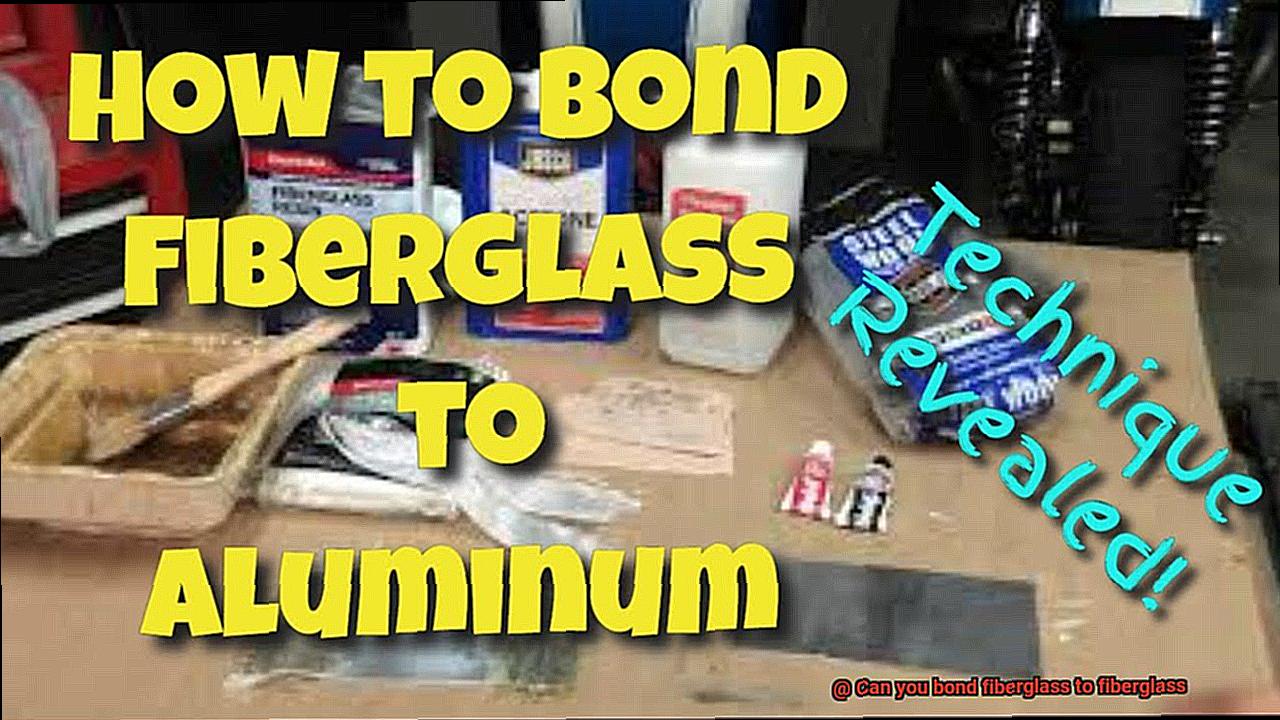
Epoxy adhesives are the superheroes of the bonding world, capable of uniting fiberglass to fiberglass with unrivaled strength and durability. These remarkable bonding agents are known for their exceptional ability to withstand the harshest environmental conditions, making them a go-to choice for a wide range of applications.
To wield the power of epoxy adhesives and create unbreakable connections between fiberglass surfaces, follow these steps:
- Prepare the battlefield: Cleanliness is key. Eliminate any dirt, dust, or contaminants that might hinder the bonding process. For an extra boost, roughen up the surfaces with sandpaper to enhance the mechanical bond.
- Mix it up: Epoxy adhesives typically consist of two parts – resin and hardener. Master the art of ratio mixing by carefully following the instructions on the packaging. When these two components unite, a chemical reaction is set in motion, unleashing the adhesive’s potential.
- Apply like a pro: Choose your weapon – brush or spatula – and apply the adhesive evenly and consistently to both surfaces. Coat each area with precision and finesse.
- Unite the forces: Bring those fiberglass pieces together with gusto. Press them firmly, ensuring maximum contact between the surfaces. If extra reinforcement is needed, call upon clamps or weights to hold everything in place while the adhesive works its magic.
- Patience is a virtue: The curing time varies depending on the specific epoxy adhesive and environmental factors. While waiting for the bond to solidify, savor a cup of coffee and let time do its thing.
- Revel in your unbreakable bond: Once the epoxy adhesive has fully cured, you’ll be left with a bond that can withstand anything life throws its way. However, keep in mind that certain coatings or finishes may not be compatible with epoxy adhesives. Take proper precautions to prepare those surfaces accordingly.
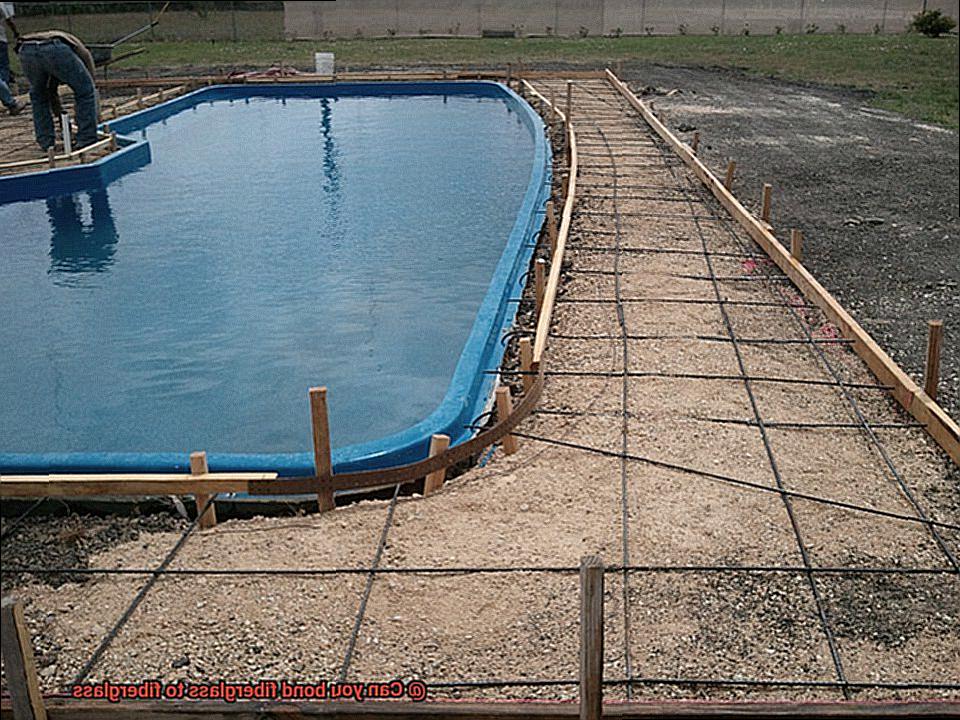
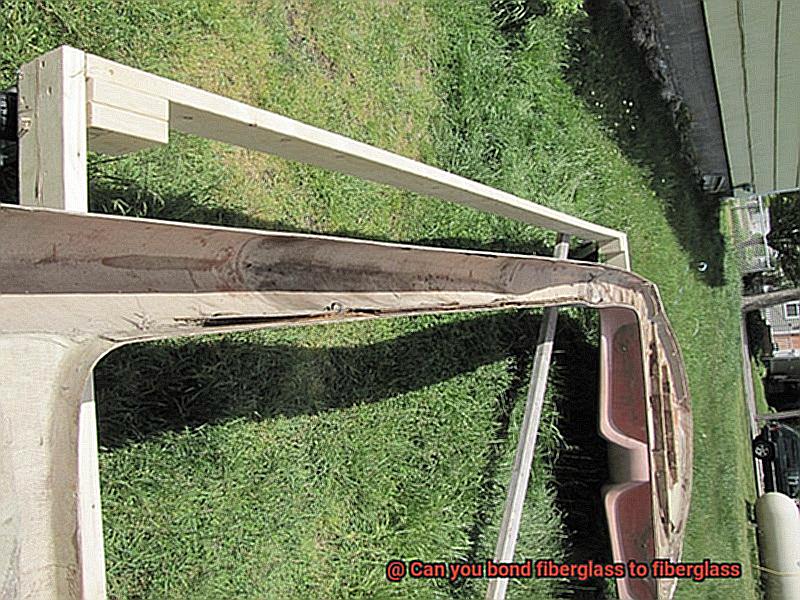
Polyester Resin
If you seek an adhesive that stands the test of time, look no further. In this article, we will delve into the intriguing process of bonding fiberglass using polyester resin, unlocking its potential and power.
Prepare for Success:
Before embarking on the bonding journey, meticulous surface preparation is key. Immaculate cleanliness is paramount. Eliminate unwanted contaminants like dust, grease, or wax from both fiberglass surfaces. Take a moment to mend any damaged areas for a seamless connection.
Mixing for Mastery:
Enter the catalyst, the enigmatic ingredient that sets polyester resin apart. Follow the manufacturer’s instructions to achieve the perfect mixing ratio. It’s akin to reliving the wonders of chemistry class. Blend the resin and catalyst thoroughly, ensuring a homogeneous mixture that guarantees optimal curing.
Apply with Precision:
Armed with your mixed resin, it’s time to make your move. With a brush or roller in hand, gently apply a thin layer of resin onto one of the fiberglass surfaces. Picture spreading icing on a cake – smooth and even.
The Perfect Alignment:
Now comes the exhilarating moment – uniting the two fiberglass surfaces. Align them with finesse, ensuring they fit together seamlessly like interlocking puzzle pieces. Employ a roller or squeegee to apply pressure evenly across the entire surface. This step not only fosters solid contact but also banishes those bothersome air bubbles ensnared in the resin’s grip.
Patience is Key:
Now begins the waiting game. Allow the polyester resin to cure for the recommended time specified by the manufacturer. Remember, patience reaps rewards. Factors such as temperature and humidity can influence curing times, so adhere to guidelines for optimal bonding strength.
Cyanoacrylate (Super Glue)
Prepare to embark on a captivating journey into the realm of adhesives as we unveil the limitations of Super Glue when it comes to bonding fiberglass. Brace yourself for an alternative that will revolutionize your fiberglass projects. Get ready to discover the wonders of polyester resin.
The Challenge of Bonding Fiberglass with Super Glue:
Super Glue, the mighty cyanoacrylate adhesive renowned for its fast-acting grip on various materials. It’s the go-to choice for quick repairs and a multitude of DIY projects. However, when it comes to bonding fiberglass to fiberglass, this adhesive may not meet our high expectations.
The Unique Properties of Fiberglass:

Picture this: a composite material comprised of glass fibers nestled within a resilient resin matrix. Behold the strength, lightness, and versatility of fiberglass, a material synonymous with boat building and automotive parts. But alas. Its smooth, impenetrable surface presents a challenge for Super Glue. The adhesive struggles to penetrate deeply enough to establish a secure bond.
The Achilles Heel: Stress and Flexing:
There’s another reason why Super Glue disappoints in bonding fiberglass – it lacks the fortitude to withstand stress and flexing. Fiberglass materials are engineered to endure diverse forces over time. Regrettably, Super Glue falls short in this arena. The bond it creates may weaken or even fracture due to its inherent properties.

Enter the Hero: Polyester Resin:
Fear not, for an unparalleled solution is at hand – polyester resin adhesives. Tailored specifically for composite materials like fiberglass, these adhesives offer exceptional adhesion and forge formidable bonds that stand the test of time. With meticulous surface preparation and adherence to manufacturer instructions, polyester resin adhesives work wonders.
The Key Steps for Successful Bonding:
To ensure triumphant bonding, cleanse the surfaces of all impurities before applying the epoxy resin adhesive. Apply the adhesive uniformly on both surfaces and allow it to cure according to the manufacturer’s instructions. This attention to detail guarantees optimal bonding strength.
Applying the Adhesive
In this comprehensive guide, we will delve into the art of applying adhesive to achieve strong and durable bonds between fiberglass surfaces. Whether you’re a DIY enthusiast or a professional craftsman, our step-by-step approach will equip you with the knowledge and skills needed to achieve flawless results.
Preparation is Key:
Before applying adhesive, meticulous preparation is essential. Start by thoroughly cleaning both surfaces that will be bonded. Rid them of dirt, dust, grease, and any other contaminants using a mild detergent and water. To enhance adhesion, gently roughen the surfaces with fine-grit sandpaper or a wire brush, creating a textured surface.
Selecting the Right Adhesive:
Choosing the correct adhesive for your specific application and strength requirements is crucial. Epoxy, polyester resin, and polyurethane adhesives are popular options for bonding fiberglass. Research each type to determine which best suits your project’s needs.
Application Techniques:
Adhere to the manufacturer’s instructions meticulously when applying the adhesive. Mix components in correct proportions and work within the recommended working time. Employ a brush or spreader to apply a thin and even layer of adhesive to one of the prepared surfaces.
Achieving Optimal Bond:
After applying the adhesive, firmly press the two prepared surfaces together. Utilize clamps or weights to ensure consistent pressure across the entire bond area. This promotes maximum contact between the surfaces for effective bonding.
Curing Time:
Allow sufficient time for the adhesive to fully cure before subjecting it to stress or load. Curing times vary depending on the adhesive type, but it is generally recommended to wait 24 hours. Patience truly pays off here.
Excess Adhesive Removal:
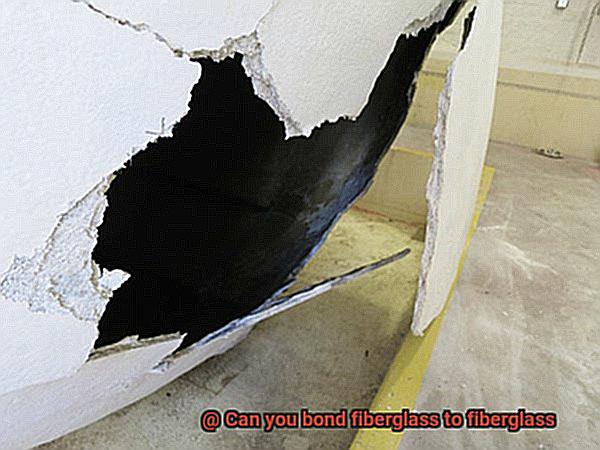
Once cured, remove any excess adhesive using a suitable solvent or carefully scrape it off. Exercise caution to avoid damaging the bonded surfaces during this process.
Test for Strength:
Before relying on the bond for critical applications, it is vital to test its strength. Apply controlled force or load to the bonded surfaces and check for signs of failure or separation. This step ensures the bond is reliable and durable.
Factors Affecting Bond Strength
Bonding fiberglass surfaces requires a strong and durable bond to ensure the success and longevity of the project. To achieve this, it is essential to understand the factors that impact bond strength. In this blog post, we will explore the five key factors that affect bond strength between fiberglass surfaces, with a specific emphasis on the role of glue. By understanding these factors and following proper techniques, you will be well-equipped to create flawless bonds that stand the test of time.
Surface Preparation:
To establish a strong bond, proper surface preparation is crucial. Ensure both fiberglass surfaces are clean, dry, and free from dirt, dust, oils, or contaminants. Use a solvent or cleaner designed for fiberglass surfaces and lightly roughen the surfaces with sandpaper for enhanced adhesion.
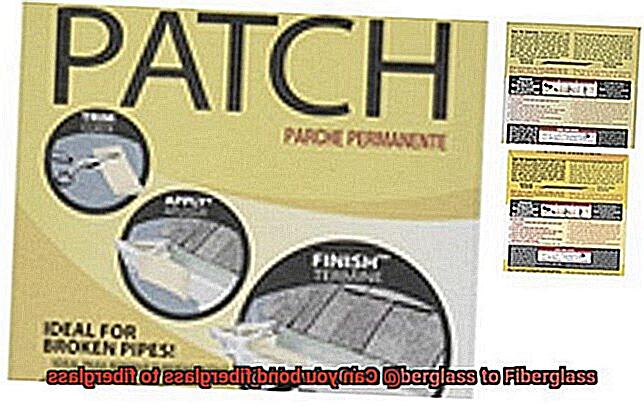
Adhesive Selection:
Choosing the right adhesive is vital for a successful bond. Epoxy adhesives offer high strength and durability, making them ideal for bonding fiberglass. Polyurethane adhesives provide flexibility and resistance to water and chemicals. Cyanoacrylate adhesives offer quick bonding, but their strength may vary in different applications. Select an adhesive specifically formulated for bonding fiberglass to ensure optimal results.
Adhesive Application:
Proper application technique is essential for a strong bond. Follow the manufacturer’s instructions carefully. This may involve correctly mixing epoxy components or applying a thin, even layer of adhesive using a brush or applicator. Applying too much or too little adhesive can compromise bond strength.
Curing Time:
Allowing sufficient curing time is critical for maximum bond strength. Adhesives need time to fully cure and reach their optimal strength. Rushing the process by applying pressure or exposing the bonded surfaces to excessive heat can weaken the bond. Follow the manufacturer’s instructions and give the adhesive enough time to cure before subjecting it to stress or load.
Environmental Conditions:
Environmental factors like temperature, humidity, and UV radiation significantly impact bond strength. Some adhesives have specific temperature or humidity requirements for optimal bonding. Prolonged sunlight exposure can degrade certain adhesives, weakening the bond over time. Consider these environmental factors and select an adhesive suitable for the intended application and environment.
6U6iFlFOwxk” >
Conclusion
Indeed, the question of whether fiberglass can be bonded to fiberglass is a common one. The answer, fortunately, is a resounding yes. Fiberglass has excellent adhesive properties that allow for strong and durable bonds between fiberglass surfaces. Whether you are working on a boat repair project or constructing a custom fiberglass piece, bonding fiberglass to fiberglass is not only possible but also highly effective.
The key to successfully bonding fiberglass to fiberglass lies in using the right adhesive. Epoxy resin is often the preferred choice due to its exceptional strength and ability to withstand harsh environmental conditions. When applying epoxy resin, it is essential to ensure that both surfaces are clean and free from any contaminants that could hinder the bonding process.
To achieve optimal results, it is recommended to roughen the surface of the fiberglass using sandpaper or a similar abrasive material. This helps create a better bond by increasing the surface area for adhesion. Additionally, applying multiple layers of epoxy resin can further enhance the strength of the bond.
Another crucial factor in achieving a successful bond between fiberglass surfaces is proper curing time. Epoxy resin typically requires sufficient time to cure fully and reach its maximum strength. Following the manufacturer’s instructions regarding curing time is vital to ensure a strong and long-lasting bond.
In conclusion, bonding fiberglass to fiberglass is not only possible but also highly effective when done correctly. By using an appropriate adhesive such as epoxy resin, preparing the surfaces adequately, and allowing for sufficient curing time, you can achieve durable bonds that will withstand the test of time.

